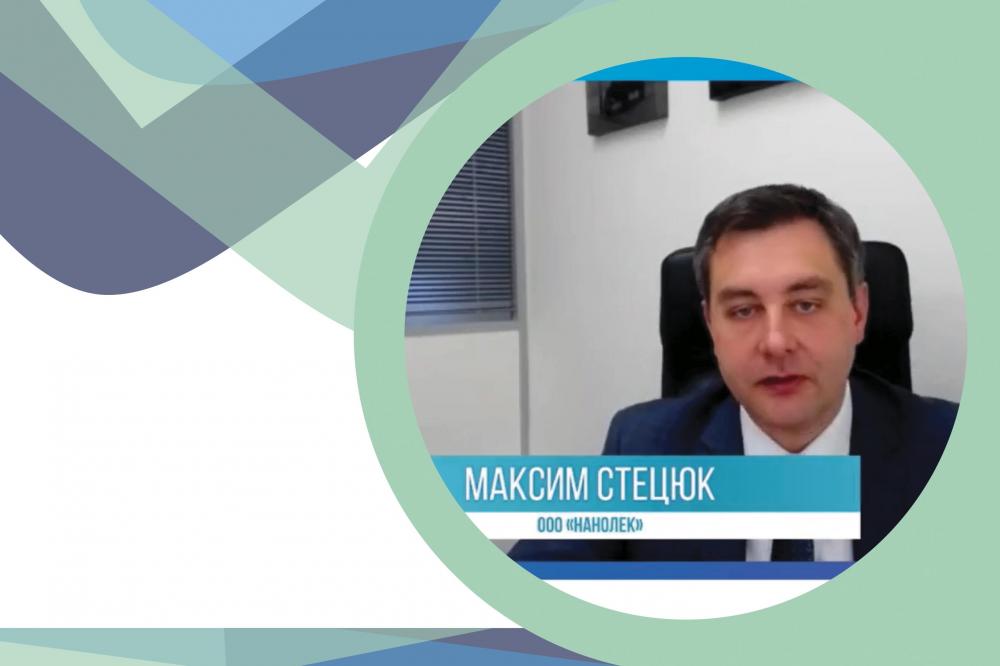Participants of the online panel “Issues of preventive immunization and vaccine production” discussed the search for quick solutions to create vaccines against COVID-19, the strategy for the development of preventive immunization against infectious diseases until 2035, planning a horizon in vaccine production, technology transfer, clinical research and other pressing issues.
The discussion was co-moderated by: Evelina Zakamskaya (Editor-in-Chief at the “Doctor” TV channel), Elena Denisova (Deputy Director of the Development of the Pharmaceutical and Medical Industry of the Ministry of Industry and Trade of the Russian Federation), Konstantin Chernov (Deputy General Director for Design Activities and Innovations at the Chumakov Federal Scientific Center for Research and Development of Immune-and-Biological Products of Russian Academy of Sciences). Following experts were invited to join the panel: Viktor Fisenko (Deputy Minister of Health of the Russian Federation), Vadim Tarasov (Director of the Institute of Translational Medicine and Biotechnology at the I.M. Sechenov First Moscow State Medical University), Elena Sakanyan (Director of Science at the Scientific and Production Association “Microgen”), Victor Trukhin (Director of the Federal State Unitary Enterprise “St. Petersburg Scientific Research Institute of Vaccines and Serum and Enterprise for the Production of Bacterial Preparations) and Maxim Stetsyuk (Executive Director at Nanolek) .
Many highly dangerous infections (poliomyelitis, smallpox, etc.) have been eradicated or are under control at present, but the humanity quickly forgets the risks. The WHO believes that one of the biggest threats in today’s world is the vaccine rejection. The panelists elaborated on the situation regarding protection of the population from infections using the example of the coronavirus pandemic. A reliable and timely protection of the population can be achieved only through joint and well-coordinated collaboration between all market players. Vaccine development is a complex long-term process involving developers, manufacturers and regulatory agencies.
One of the important steps in this direction was the approval of the 15-Year Strategy for the Development of Preventive Immunization by the Government – the document developed by order of the President of Russia and defining an plan of activities for the next 15 years, until 2035. The strategy focuses on the immunization to get protected against a variety of infections and assumes that the preventive vaccination will cover at least 95% of the population. This is exactly the percentage that helps achieve a significant effect from vaccine prophylaxis.
Maxim Stetsyuk, Executive Director at NANOLEK, noted in his speech: “For manufacturers, the Strategy for the Development of Preventive Immunization until 2035 now approved has become a very important milestone. In this case, COVID-19 can be seen as an impulse to boost the growth of the pharmaceutical industry. Indeed, the WHO included a rejection of of vaccines to the list of 10 major threats to humanity. As manufacturers, we acknowledge that immunization is a cost-effective step towards protecting people’s life and health: 1 ruble invested in vaccination equals 16 times the budget saving effect in the future.
Currently, a road map is being developed as part of the Strategy to ensure the sustainability and the most transparent planning of the system. We believe we should stick to long-term planning. It is crucial to reinforce the practice of signing state contracts for longer periods (3, 5, 7 years). The 2-year contract which regulates our supplies of vaccines since 2019, for example, has proved to be effective: cyclical production, early planning, no regional shortages, and contract performance according to the set deadlines in a pandemic context.
What can manufacturers do in return is, first of all, to keep their operations going according to internationally recognized GMP standards, to localize and produce patented state-of-the-art vaccines. E.g. combination vaccines that can protect a child from numerous vaccine-preventable diseases at the same time, thus decreasing the number of injections required and reducing visits to health care facilities.”

